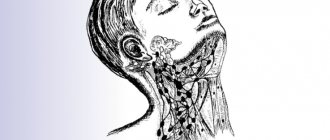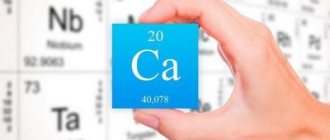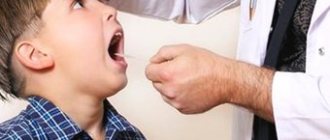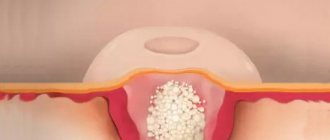Rheumatism in children
Clinical manifestations of rheumatism in children are diverse and variable. The main clinical syndromes include rheumatic carditis, polyarthritis, minor chorea, anular erythema and rheumatic nodules. All forms of rheumatism in children are characterized by clinical manifestation 1.5-4 weeks after the previous streptococcal infection.
Heart damage during rheumatism in children (rheumatic carditis) always occurs; in 70-85% of cases – primary. With rheumatism in children, endocarditis, myocarditis, pericarditis or pancarditis may occur. Rheumatic carditis is accompanied by lethargy, fatigue of the child, low-grade fever, tachycardia (less often bradycardia), shortness of breath, and heart pain.
A repeated attack of rheumatic carditis, as a rule, occurs after 10-12 months and is more severe with symptoms of intoxication, arthritis, uveitis, etc. As a result of repeated attacks of rheumatism, acquired heart defects are detected in all children: mitral insufficiency, mitral stenosis, aortic insufficiency, aortic stenosis, mitral valve prolapse, mitral-aortic disease.
In 40-60% of children with rheumatism, polyarthritis develops, both isolated and in combination with rheumatic carditis. Characteristic signs of polyarthritis in rheumatism in children are predominantly damage to medium and large joints (knees, ankles, elbows, shoulders, less often - wrists); symmetry of arthralgia, migrating nature of pain, rapid and complete reverse development of articular syndrome.
The cerebral form of rheumatism in children (chorea minor) accounts for 7-10% of cases. This syndrome mainly develops in girls and is manifested by emotional disorders (tearfulness, irritability, mood swings) and gradually increasing motor disorders. First, handwriting and gait change, then hyperkinesis appears, accompanied by impaired speech intelligibility, and sometimes the inability to independently eat and care for oneself. Signs of chorea completely regress after 2-3 months, but tend to recur.
Manifestations of rheumatism in the form of anular (ring-shaped) erythema and rheumatic nodules are typical for childhood. Ring-shaped erythema is a type of rash in the form of rings of pale pink color, localized on the skin of the abdomen and chest. There is no itching, pigmentation or flaking of the skin. Rheumatic nodules can be found in the active phase of rheumatism in children in the occipital region and in the joint area, at the sites of tendon attachment. They look like subcutaneous formations with a diameter of 1-2 mm.
Visceral lesions in rheumatism in children (rheumatic pneumonia, nephritis, peritonitis, etc.) are practically never encountered at present.
Symptoms
Only when certain symptoms of rheumatism in children are present is treatment prescribed. Most often, a child of school age experiences acute attacks, which manifest themselves in the form of intoxication and febrile temperature. Often, respiratory tract diseases are diagnosed before this (14-21 days before). But these are not all the symptoms of rheumatism in children. The child may feel weakness, dull or sharp pain in the joints.
In addition, it is noted:
- pale skin;
- increase or maximum deceleration of heart rate.
Symptoms of rheumatism in children also include changes in the boundaries of the heart (their expansion).
The problem of rheumatic fever in children at the beginning of the 21st century
The article highlights issues related to the prevalence and primary incidence of LC in children, a more favorable course of the disease, improvement of its diagnosis, treatment and prevention, which contributed to a decrease in the frequency of recurrence and progression of the pathological process, as well as a decrease in the percentage of heart disease formation.
According to modern views, rheumatic fever (RF) is a systemic connective tissue disease with a predominant localization of the process in the cardiovascular system, developing after infection with group A β-hemolytic streptococcus in predisposed individuals, mainly children and adolescents 7-15 years old. RL is caused by the development of an autoimmune response to streptococcal epitopes and cross-reactivity with similar epitopes of human tissue (V. A. Nasonova, Y. Stollerman, 1997).
According to generalized WHO data (1989), the prevalence of LC among children in various regions of the world in the 80s was 0.3-18.6 per 1000 schoolchildren, while in previous decades a study conducted by the WHO group in developing countries at the end of the twentieth century , allowed us to state that this parameter, varying in individual areas, averaged 2.2 per 1000 school-age children. According to the same source (WHO-1989), rheumatic heart disease (RHD) is still the main cause of death for young people.
As for the primary incidence of rheumatism, according to WHO (1989), it began to decline in economically developed countries in the mid-twentieth century, with the most pronounced decrease in the increase in the incidence of rheumatism observed over the past 30 years. In the 1980s, the prevalence of the disease was five people per 100,000 population.
The incidence of rheumatism in the Russian Federation, which has also been declining over the past decades, currently averages 0.3 per 1000 children (1990) (from 0.2 to 0.8, according to N. N. Kuzmina et al., 1996).
However, it would be premature to claim that rheumatism has been completely eliminated. This is evidenced by outbreaks of the disease observed over the last decade in the USA and other countries, including Russia (Adanja et al., 1991, Bisno et al., 1993, R. Veasy et al., 1994, 2000; O. M. Folomeeva, 1996).
It should be noted that outbreaks of LC in economically developed countries came as a complete surprise not only to general practitioners, but also to rheumatologist specialists.
Etiology and pathogenesis
According to the experience accumulated in the world of rheumatology, there is a clear connection between upper respiratory tract infection caused by group A β-hemolytic streptococcus and the subsequent development of acute rheumatism. It has been established that streptococcus has a multifaceted effect on the body, although the pathogenetic mechanisms leading to the onset of the disease are still not fully understood.
It is believed that with the development of streptococcal infection, especially massive ones, a large number of different cellular and extracellular antigenic toxins, among which the main role is played by the M-protein of the cell wall, which is a virulence factor, has a direct or indirect damaging effect on tissue.
Equally, and perhaps more important, is the presence of epitopes in M-protein molecules that cross-react with human cardiac and renal tissues.
Immune (cellular and humoral) reactions play a major role in the induction of LC. The humoral response to various streptococcal antigens (ASLO, ASA, ASG, etc.) is well known. The pathogenetic effect of these substances is due to the fact that they are capable of damaging various cells and tissues of the body.
At the end of the twentieth century, the presence of other humoral immune reactions in LC was shown, namely, antibodies to cardiolipin of the IgG class.
A new direction was the assessment of the nature of the development of immunopathological reactions in RL in the form of increased levels of IL-II RFNO-R and neopterin, reflecting the activation of monocytes/macrophages and T-lymphocytes in connection with an increase in the level of rIL-2R.
The accumulated medical experience shows that streptococcal exposure alone is not enough for the development of the disease.
The founder of the pediatric school, A. A. Kisel, at the beginning of the twentieth century pointed out the role of family predisposition in the development of rheumatic fever, as evidenced by the familial aggregation of rheumatism, which significantly exceeds the prevalence of the disease in the population. It has been established that the frequency of “familial” rheumatism is undoubtedly influenced by environmental (primarily streptococcal infection) and genetic factors.
In recent years, a hypothesis has been considered according to which the B-lymphocyte alloantigen, detected using monoclonal antibodies D8/17, is associated with susceptibility to rheumatism (YD Zabriskie, 1985; A. Yibotsky et al., 1991, HA Shostak, 1996). According to the listed authors, this alloantigen can be regarded as a genetic marker that determines susceptibility to the disease.
In recent years, new directions have been developed in the study of the pathogenesis of post-streptococcal diseases, including rheumatism (A. A. Totolyan, 1988; E. L. Nasonov, B. Dzhuzenova, 1991, etc.), however, many aspects of this difficult problem are far from final permissions.
Clinical manifestations of LC in children
As the experience accumulated in the world of rheumatology shows, age-related reactivity plays an important role in the occurrence of LC. Thus, 85 - 90% of patients who develop LC for the first time are children and young people aged 3 to 20 years.
The main distinguishing feature of LC in children has always been the presence of a more pronounced exudative component of inflammation, which is reflected in the clinical manifestations of the disease, namely, more frequent damage to the cardiovascular system, accompanied by severe rheumatic carditis, often combined with extensive damage to the valve apparatus, pericardium, involvement into the pathological process of other serous membranes in the form of visceritis, abdominal syndrome, polyserositis, etc. Such patients often experienced circulatory failure and a high percentage of cases of disease outcome in heart disease. In children, extracardiac manifestations, such as polyarthritis, chorea, annular rash, and rheumatic nodules, were more often (compared to adults) detected. Young patients are also characterized by more frequent recurrence of the disease.
The presented data allow us to state that LC in childhood is characterized by polymorphism and polymorphism of clinical manifestations and is more severe than in other age groups.
The clinical picture of the development of LC in children has changed in the last decades of the twentieth century (N.A. Dmitrova, 1986; N.N. Kuzmina, B.P. Shokh, 1991; RM Pope, 1990; RS Williams, 1994; LG Veasv, 1994 and etc.). It is characterized by the onset of the disease mainly at school age, the predominance of a moderate and minimal degree of activity of the inflammatory process, a significant decrease in the severity of carditis, the prevalence of mild and mild cardiac changes without clear signs of circulatory failure. This is due to the fact that the pathological process in this disease in recent years has largely lost its previously expressed exudative character. However, in recent years there has again been a tendency towards worsening cardiac pathology.
The outstanding pediatrician scientist A. A. Kisel (1940) gave a brilliant description of the main manifestations of rheumatism, calling them the absolute symptom complex of the disease. These include: polyarthritis, cardiac damage, chorea, erythema annulare, rheumatic nodules.
Rheumatic carditis
The leading factor in the clinical picture of the disease, determining the severity of its course and outcome, was and remains rheumatic carditis. Today, rheumatic carditis still occurs mainly in children (80 - 85% of cases), while in 1/5 of children it occurs as if in isolation, and in the rest it is combined with polyarthritis or chorea (B.P. Shokh, L.G Medyntseva, 1993).
Early symptoms of primary rheumatic carditis include abnormal heart rate in the form of tachycardia (30 - 40%) and bradycardia (20 - 39%). In 80 - 85% of patients at the onset of the disease there is a moderate expansion of the borders of the heart. At the same time, a weakening of heart sounds is detected, mainly the first tone, which is detected in the vast majority of patients.
Relatively often, with primary rheumatic heart disease, an additional third (40–75%) and less often a fourth (15–25%) sound is detected.
The most constant signs of primary rheumatic carditis include the appearance of systolic murmur. Depending on the predominant damage to the myocardium or valvular endocardium, systolic murmur has different localization, intensity, duration, timbre and conductivity.
Domestic pediatricians identified the component of valvular damage in the general clinical picture of primary rheumatic carditis (A. B. Volovik, 1955; Z. I. Edelman, 1962; E. S. Lepskaya, N. P. Varik, 1974; A. V. Dolgopolova, N. N. Kuzmina, 1978, N. N. Kuzmina, 2000, etc.). This is of fundamental importance, since children with valvulitis have a high risk of developing heart disease. Of particular importance in recognizing valvular lesions is the qualitative characteristics of the first murmur. Thus, with endomyocarditis with damage to the mitral valve, the systolic murmur most often has a blowing tone, is characterized by duration, and is best heard in the projection area of the mitral valve (apex, fifth point). It is often carried out to the left outside the cardiac region, intensifying after exercise. This qualitative characteristic allows it to be interpreted as endocardial.
Ultrasound examination of the heart makes it possible to objectify the signs of valvular damage.
The use of new generation Doppler echocardiography equipment (DEHOG) allowed N.N. Voronina and E.I. Polubentseva (1993–1995) to identify DEHOG criteria for rheumatic endocarditis, which can be successfully applied in any age group. According to their observations, rheumatic endocarditis of the mitral valve has the following symptoms:
- marginal thickening, looseness, “shaggyness” of the valve leaflets;
- limited mobility of the thickened posterior leaflet;
- the presence of mitral regurgitation, the degree of which depends on the severity of the lesion;
- small end prolapse (2 - 4 mm) of the anterior or posterior leaflet.
In children with mitral valve valvulitis, especially severe, the ECG often shows disturbances in heart rate, migration of the pacemaker, prolongation of atrioventricular conduction of the first and, less often, second degree, disturbance of bioelectrical processes in the ventricular myocardium.
Practice shows that aortic valve valvulitis is clinically manifested by a “flowing” diastolic murmur heard along the left edge of the sternum.
During the DEHOG study, the following is noted:
- thickening, looseness of the echo signal of the aortic valves, which is clearly visible in diastole from the parasternal position and in cross section. More often there is pronounced thickening of the right coronary cusp. Eccentricity index =1;
- aortic regurgitation (direction of the jet towards the anterior mitral valve);
- high-frequency flutter (flater) of the anterior mitral leaflet due to aortic regurgitation.
An ECG with valvulitis of the aortic valves often shows signs of diastolic overload of the left ventricle.
With primary rheumatic carditis, a pericardial friction rub may appear, but the latter is clinically detected in the modern course of the disease extremely rarely (0.5–1%).
Circulatory failure usually does not exceed the first and much less often the second stages.
One of the most important clinical criteria confirming the presence of primary rheumatic heart disease in a child is the positive dynamics of clinical and paraclinical manifestations of the disease under the influence of active antirheumatic therapy.
It has been established that the outcome of rheumatic carditis is determined by the frequency of heart disease formation. Unlike previous decades, the percentage of cases of heart disease development after primary rheumatic carditis decreased by two and a half times and averaged 20 - 25% (N. N. Kuzmina, B. P. Shokh, 1991, 2000).
Today, in the structure of rheumatic heart defects in children, as in previous years, isolated heart defects predominate, primarily mitral insufficiency; aortic valve insufficiency, mitral-aortic disease and mitral stenosis are less common.
Rheumatoid arthritis
Arthritis, which is the most common manifestation of LC, occurs in 65 - 75% of children during the first attack of the disease. The articular syndrome observed at the onset retains its previously inherent volatility, affects a varying number of predominantly large and medium-sized joints, is characterized by brightness and is short-lived. However, often the articular syndrome is reduced or becomes prolonged.
With repeated attacks, rheumatoid arthritis is less common and is characterized by similar clinical manifestations.
Arthritis, as a rule, is completely cured without leaving any complications.
Chorea
Chorea occurs in 12–17% of patients with rheumatism and mainly affects girls aged 6 to 15 years. The disease most often develops gradually - children experience unstable mood, asthenia, tearfulness, and irritability. Later, the main symptom complex is added, characterized by hyperkinesis, incoordination of movements, and decreased muscle tone.
Hyperkinesis is manifested by chaotic, non-stereotypical violent movements of various muscle groups and is accompanied by impaired handwriting, speech becomes slurred, and movements become awkward. It is difficult for a child to bring a spoon to his mouth and eat and drink independently.
Hyperkinesis, which intensifies in a state of excitement and disappears during sleep, is more often bilateral, less often - unilateral (hemichorrhea). Carrying out coordination tests is difficult. There are patients with severe muscle hypotonia. Minor chorea is often accompanied by symptoms of autonomic dystonia. Today, the severity of the clinical manifestations of chorea has also decreased; the “choric storm” and the “paralytic form” are practically no longer encountered.
Ring-shaped erythema (annular rash) is observed in 7 - 10% of children. It is localized on the skin of the body, less often on the arms and legs.
Rheumatic nodules
Rheumatic nodules have been observed very rarely in recent years, mainly in children with recurrent rheumatism.
As already indicated, damage to internal organs in children with the modern course of rheumatism is rare and manifests itself mainly in the form of abdominal syndrome.
Laboratory data
In the active phase of LC, shifts in inflammatory activity indicators are noted. Thus, in the vast majority of children with a first or repeated attack, an acceleration of ESR, an increase in seromucoid levels, dysproteinemia with a decrease in the amount of albumin and an increase in globulin fractions due to an increase in γ-globulins are observed and, in addition, there is a tendency to leukocytosis.
The study of humoral indicators of immunity indicates an increase in all classes of immunoglobulins A, M, G. Circulating immune complexes are often determined (V. A. Nasonova, 1989).
Diagnosis and diagnostic criteria
It has been established that LC is characterized by a variety of clinical manifestations and variability of the course. This creates undoubted difficulties in recognizing it. That is why, since the research of Sokolsky and Buyo, the improvement of diagnostic criteria for rheumatism, a description of which was presented by the outstanding pediatrician A. A. Kisel in 1940, has not stopped. Somewhat later, RL recognition criteria were formulated by TD Jons (1944).
The diagnostic criteria for LC were subsequently modified by the American Heart Association in 1955 and 1965.
Significant additions to the diagnostic criteria for rheumatism were made by A. I. Nesterov (1963, 1966, 1973). This document is known in our country as the Kisel-Jones-Nesterov criteria.
In 1982, the criteria for rheumatism were again revised by the American Rheumatological Association. Currently, the WHO research group (1992) recommends that the diagnosis of acute rheumatism be based on the following criteria (WHO, 1992).
The presence of two major or one major and two minor criteria indicates a high probability of developing acute rheumatism in the presence of confirmed data on a previous infection caused by group A streptococcus.
The great merit of domestic researchers (A. I. Nesterov, 1973; A. V. Dolgopolova, N. N. Kuzmina, 1978; V. A. Nasonova, I. A. Bronzov, 1978) was the development of complex treatment methods based on knowledge the most important etiopathogenetic features of this disease and providing:
- stationary stage;
- follow-up treatment at a local rheumatological sanatorium;
- dispensary observation.
This scheme has stood the test of time, which is why it still retains its significance to this day.
A modern doctor has a powerful arsenal of antirheumatic drugs, which are prescribed from the first day of rheumatism diagnosis.
1999 marked half a century since the first use of cortisol (E-acetet) in LC. The invention of hormonal drugs is a great achievement of the twentieth century. It has been established that corticosteroids are able to influence factors that provoke the development of allergic and autoallergic reactions, and also have a powerful anti-inflammatory potential and immunomodulatory effect. Over the past 50 years, hormonal drugs have been constantly improved, the use of which, undoubtedly, is associated with an entire era in the treatment of LC, a change in the course of the disease, which made it possible to save many human lives. However, today the initial enthusiasm has given way to a more restrained attitude towards the possibilities of treatment with hormonal agents due to the fact that long-term observations of patients with LC have revealed a sufficient number of adverse reactions, especially from the myocardium, that occur when using corticosteroids. These data indicate that nonsteroidal anti-inflammatory drugs may be the treatment of choice for LC. However, taking into account the distinct anti-inflammatory and desensitizing effect of steroid hormones, pediatricians unanimously came to the conclusion that corticosteroids are still indicated in modern conditions for children with a distinct component of inflammation, that is, with pronounced and moderate carditis, with a maximum or moderate degree of activity of the rheumatic process , as well as in the acute course of the disease.
Initial daily doses of hormones are prescribed at the rate of 0.7 - 1 mg per 1 kg of child weight per day. Their use remains important taking into account the physiological biorhythm of the adrenal cortex. The course of treatment averages 1–1.5 months. Side effects of corticosteroids in children and adolescents include transient increases in blood pressure, excess fat deposition, hypertrichosis, skin changes (dryness, acne, age spots, etc.), menstrual irregularities, changes in the nervous system, and gastrointestinal dysfunction. - intestinal tract, etc. In the last two decades, due to changes in the course of RL, when treating it, pediatricians are increasingly using only non-steroidal anti-inflammatory drugs, primarily Voltaren or its analogues.
Currently, preference should be given to a new class of non-steroidal compounds - cyclooxygenase inhibitors (COX-2) - nimesulide (Nise), which has good anti-inflammatory activity and is less toxic to the gastrointestinal tract. Nise is available in convenient dosage forms (50 mg dispersible tablets, 60 ml suspension in a bottle with a measuring cap) and is well tolerated by children. Nise is used 2-3 times a day at an optimal dose of 1.5 mg per kg of child’s body weight. The maximum daily dose is 5 mg per kg. For children weighing more than 20 kg, it is recommended to prescribe 50 mg 2 times a day.
In the treatment of primary rheumatic carditis with damage to the valvular apparatus, as well as protracted forms of rheumatism, quinoline drugs are still widely used: delagil, plaquenil, etc. (A. V. Dolgopolova, N. N. Kuzmina, 1978; N. N. Kuzmina, 1996, etc.).
Considering the streptococcal etiology of rheumatism, the principle of simultaneous administration of a 10-14-day course of penicillin or its analogues with anti-inflammatory drugs remains in force. In the presence of multiple and often exacerbating foci of infection, the course of penicillin therapy is lengthened, and according to indications, patients already in the hospital are transferred to bicillin injections.
Follow-up treatment in a local rheumatology sanatorium is the most important part of the complex treatment of LC.
The third component of rehabilitation therapy should be clinical observation of patients who have suffered rheumatic carditis. It is postulated that timely initiation of adequate therapy followed by staged treatment and further preventive measures in the vast majority of patients with primary rheumatic carditis (80 - 90%) not only leads to suppression of the rheumatic process, but also prevents the formation of heart disease, that is, promotes practical recovery or complete rehabilitation of the child (A. I. Nesterov, 1973; A. V. Dolgopolova, N. N. Kuzmina, 1978; B. P. Shokh, L. G. Medyntseva, 1993).
Prevention
The LC prevention program includes primary and secondary prevention. Primary prevention includes two stages:
- activities to improve the health of children and adolescents;
- measures to combat streptococcal infection (early diagnosis and adequate treatment of upper respiratory tract infections caused by group A streptococci). The drug of choice in this case remains penicillin, which is prescribed 750,000 units to preschool children, 1,000,000-1,500,000 units to school-aged patients for 10-14 days or the first 5 days, followed by the administration of bicillin-5 at a dose of 750,000-1 500,000 units to patients twice with an interval of five days. When administered orally, the prescribed dose of phenoxymethylpenicillin or its analogs: oxacillin, ampicillin is 500-750 units per day for preschool children and 1,000,000-1,500,000 units for school-age patients.
According to WHO recommendations (1989), an effective drug in the treatment of nasopharyngeal infection is oral acid-fast penicillin-phenoxymethylpenicillin-ospen, which is prescribed in the same doses as phenoxymethylpenicillin. For patients with allergies, erythromycin may be an acceptable alternative. The semisynthetic macrolide antibiotic azithromycin (sumamed) has been reported to have some advantages over erythromycin. Roxithromycin has a similar effect. Other broad-spectrum antibiotics (eg, cephalosporins) can also effectively eliminate group A streptococcus from the upper respiratory tract.
Secondary prevention, aimed at preventing relapses in people who have had cancer, consists of regular administration of bicillin (long-acting penicillin).
Long-term studies by domestic and foreign authors using follow-up data (V. N. Bisyarina, 1963; N. A. Barybaeva, 1974; L. I. Benevolenskaya, 1971; M. Markowitz, 1962, 1975; V. Chandrashekhar, 1990, etc. .) showed the high effectiveness of bicillin, prescribed for the prevention of relapses of rheumatism in children. The most optimal should be considered year-round prevention, carried out monthly. All children within five years after suffering an attack of rheumatism are prescribed bicillin-5 at a dose of 1,500,000 units once every four weeks for school-age children and adolescents. For preschool children, bicillin-5 is administered at a dose of 750 units once every two weeks.
For patients at high risk of recurrence of the rheumatic process, bicillin-5 should be administered once every three weeks. In recent years, benzathine benzylpenicillin-retarpen and extensillin have been considered one of the most promising long-acting antibiotics.
To prevent LC, extencillin is administered every 21 days, 600,000–1,200,000 units (for children, depending on age). One bottle contains 600,000 units, 1,200,000 and 2,400,000 units.
For secondary prevention, daily oral antibiotics (penicillin and its analogues) are also possible.
Children who have suffered the first attack of rheumatism (arthritis or chorea) without heart damage are given year-round prophylaxis over the next five years. In patients who have undergone primary or recurrent LC with cardiac damage, especially in the presence of signs of emerging or formed heart disease, year-round prophylaxis should be carried out until they reach the age of 18, and, if necessary, longer.
Simultaneously with the implementation of secondary prevention for patients with RL with the addition of acute respiratory infections, sore throat, pharyngitis, ongoing prevention is recommended. The latter involves prescribing a 10-day course of treatment with penicillin.
Bicillin prophylaxis, along with a set of other measures, is a highly effective means of preventing relapses of LC in children.
Thus, modern rheumatology has achieved undeniable success in the fight against LC. It must be emphasized that to date this problem has not been completely resolved. This primarily applies to the “surprises” of streptococcal infection, which, as is known, is characterized by cyclicality. It is assumed that the next outbreak of this infection will be observed in the first half of the 21st century (V.D. Belyakov, 1996), which, in turn, can lead to an increase in RL.
We can only hope that rheumatology, including pediatric rheumatology, which has reached new frontiers and has modern knowledge of the mechanisms of development of streptococcal infection, adequate therapeutic and preventive drugs, as well as prediction methods, will meet these “surprises” fully armed.
Literature:
- Voronina N. M. Clinical and echocardiographic characteristics of primary rheumatic carditis and its outcomes in children: Abstract of thesis. Ph.D. dis. 1983. 20 p.
- Kuzmina N.N., Amirdzhanova V.N., Dobrovolskaya Z.N. Prevalence of rheumatic diseases in children and the state of children's cardio-rheumatology service in Russia // Children's Rheumatology. 1996. No. 1. P. 3 - 8.
- Nasonova V. A., Kuzmina N. N. Rheumatism. - In the book: “Guide to rheumatic diseases”, M.: Medicine, 1997, p. 144 - 160.
- Nesterov A.I. Rheumatism. M., Medicine, 1973.
- Rheumatism and rheumatic heart disease (WHO study group report), Geneva, 1989.
- Folomeeva O. M., Benevolenskaya L. I. Rheumatism in the Russian Federation: statistics and reality // Bulletin of the Russian Academy of Medical Sciences. 1996. No. 11. P. 21 - 24.
- Shokh B.P., Medyntseva L.G. Clinical manifestations and outcome of the first attack of rheumatism in children in the 1980s // Klin. revm. 1993. No. 1. P. 12 - 15.
- Jones TD The diagnosis of rheumatic fever // JAMA 1944. Vol.126. P. 481 - 484.
- Naruba J., Virmani R., Reddy KS, Jandon R. Rheumatic fever. American Registry of Pathology, 1999, Armed Forces Institute of Pathology, Washington.
- Stollerman JH Rheumatic fever // Lancet. 1997. 349, 935 - 942.
- Williams RC, Klippel JH, Dieppe PA Acute Rheumatic Fever // Rheumatology. Mosby St Louis, Baltimore, Boston, Chicago, London, Philadelphia, Toronto. 1994, 4, 8 - 10.
N. N. Kuzmina, Doctor of Medical Sciences, Professor Institute of Rheumatology of the Russian Academy of Medical Sciences, Moscow
Symptoms of rheumatic carditis
Typically, rheumatic carditis in adults is mild. Often, symptoms are limited to only minor pain or discomfort in the heart area, shortness of breath during exercise. Similar manifestations occur in other cardiovascular diseases, so it can be difficult to establish the correct diagnosis. Less common is the feeling of interruptions in the work of the heart, increased heartbeat.
In children and some young people, rheumatic heart disease is more severe. The pain in the heart is quite severe and constantly bothers me. During exercise and even at rest, severe shortness of breath occurs. A person feels that his heart is “pounding”, “jumping out of his chest.” The most serious manifestations of inflammation in the heart are swelling in the legs and a feeling of heaviness under the right rib.










